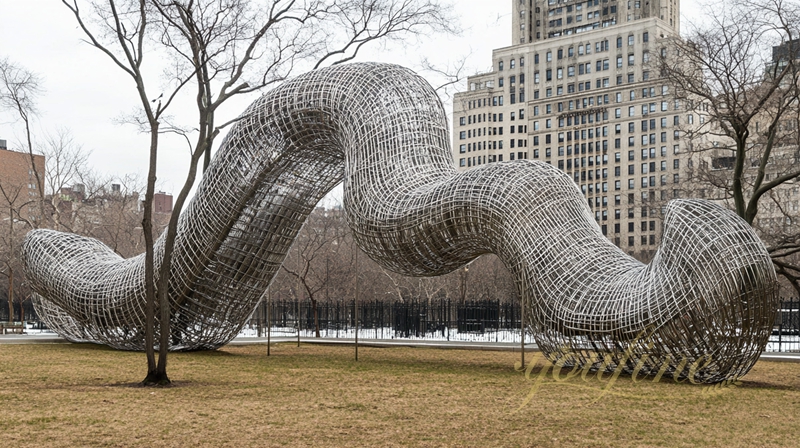In the ever-evolving world of contemporary art, stainless steel has emerged as a powerful medium for artists pushing the boundaries of traditional sculpture. Its versatility, durability, and reflective properties make it an ideal material for creating immersive and interactive experiences that challenge our perceptions of space, form, and meaning.

The Allure of Stainless Steel in Non-Traditional Art Forms
Stainless steel’s unique characteristics have captivated artists working in interactive and installation art. Its ability to withstand various environmental conditions while maintaining its luster makes it particularly suitable for large-scale outdoor installations. Moreover, its reflective surface creates fascinating interplays with light, allowing artists to manipulate viewers’ perceptions and create dynamic, ever-changing experiences.
Interactive Art: Engaging the Viewer
In the realm of interactive art, stainless steel sculptures serve as more than mere objects of contemplation. They become active participants in the artistic experience, inviting viewers to touch, move, or otherwise interact with the artwork. Some notable examples include:
Kinetic Sculptures: Artists like Anthony Howe have created wind-driven stainless steel sculptures that mesmerize viewers with their hypnotic movements.
Responsive Environments: Large-scale stainless steel installations equipped with sensors can react to the presence of viewers, changing shape or appearance in real-time.
Mirrored Environments: Artists like Anish Kapoor have used highly polished stainless steel to create immersive, mind-bending installations that distort and multiply reflections.
Installation Art: Transforming Spaces
Stainless steel’s reflective qualities and structural strength make it an excellent medium for installation artists seeking to transform spaces and challenge spatial perceptions. Some compelling applications include:
The Intersection of Art and Technology
The use of stainless steel in interactive and installation art often involves a fascinating intersection of artistic vision and technological innovation. Artists are increasingly collaborating with engineers and programmers to create works that incorporate:
Motion sensors
LED lighting systems
Hydraulic or pneumatic systems for movement
Augmented reality (AR) elements
These technological integrations expand the possibilities of what can be achieved with stainless steel, allowing for more complex and responsive artworks.
Challenges and Considerations
While stainless steel offers numerous advantages, artists working with this medium in interactive and installation contexts must navigate certain challenges:
Weight and Structural Considerations: Large-scale stainless steel sculptures require careful engineering to ensure safety and stability.
Environmental Impact: Artists must consider the environmental footprint of their work, from production to installation and potential recycling.
Maintenance: While durable, stainless steel artworks may require specific care to maintain their appearance and functionality, especially in interactive pieces.
As we move further into the 21st century, the role of stainless steel in non-traditional art forms is likely to grow. Its ability to bridge the gap between the physical and digital realms, coupled with its timeless aesthetic appeal, positions it as a medium of choice for artists seeking to create innovative, engaging, and thought-provoking works.
For artists and scholars alike, the exploration of stainless steel in interactive and installation art offers a rich field of study and experimentation. It challenges us to reconsider the boundaries between viewer and artwork, space and object, and opens up new possibilities for artistic expression in our increasingly technology-driven world.